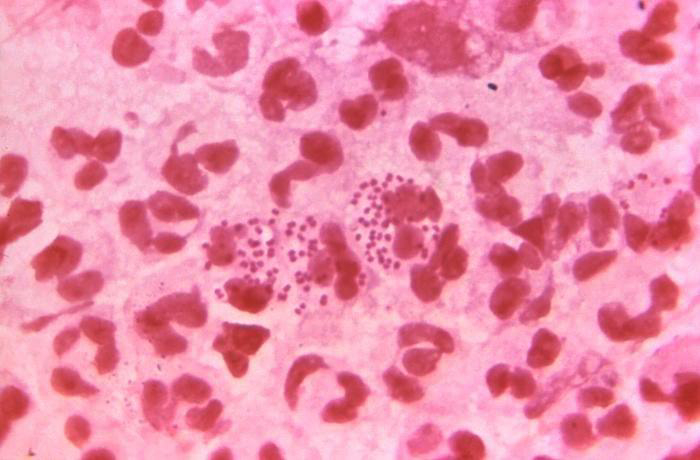The number of gonorrhea cases in Washington has jumped more than 30 percent in the past year. Five counties have even reached outbreak levels.
But Clark County appears to be bucking the trend.
o Gonorrhea rates have been on the rise in Washington since 2010. But despite the increase, Washington’s rates are still well below the national average.
o In 2011, the rate of gonorrhea cases per 100,000 Washington residents was 40.7. The national rate that year was 104.2, according to the Centers for Disease Control and Prevention.
“The numbers are up, but not in Clark County,” said Dr. Alan Melnick, Clark County Public Health administrator/health officer. “We’re actually a little behind compared to 2012.”
o Gonorrhea rates have been on the rise in Washington since 2010. But despite the increase, Washington's rates are still well below the national average.
o In 2011, the rate of gonorrhea cases per 100,000 Washington residents was 40.7. The national rate that year was 104.2, according to the Centers for Disease Control and Prevention.
As of Oct. 19, Clark County health care providers had reported 100 cases of the sexually transmitted disease to the county health department this year. During that same time period last year, the county had recorded 128 cases, Melnick said.
By the end of 2012, Clark County providers had reported 151 cases of gonorrhea. Melnick doesn’t expect the county will exceed that number this year.
Statewide, health departments recorded 3,137 cases of gonorrhea through September. During the same nine-month time period in 2012, counties recorded 2,350 cases, according to the Washington State Department of Health.
Five Washington counties — Spokane, Yakima, Thurston, Kitsap and Benton — have experienced more dramatic increases, reaching outbreak levels, according to the state health department.
Common disease
Gonorrhea is one of the most common sexually transmitted diseases, second only to chlamydia. The Centers for Disease Control and Prevention estimates about 820,000 people in the U.S. get new gonorrhea infections each year but less than half of the infections are reported to the CDC. Young adults and teenagers have the highest rates of infection, according to the CDC.
Gonorrhea is a bacterial infection that grows easily in the warm, moist areas of the reproductive tract in women and in the urethra in men and women. The bacteria can also grow in the mouth, throat, eyes and anus, according to the CDC.
The disease is transmitted by having vaginal, anal or oral sex with someone who has the disease. Gonorrhea can also be passed from an untreated mother to her baby during delivery, according to the CDC.
Most men show symptoms of infection, but most women won’t get any symptoms until they’ve developed complications from the disease, Melnick said. A person with gonorrhea is contagious even if they’re not showing symptoms, he said.
Symptoms in men include inflammation of the urethra, burning sensation when urinating, discharge and pain in the penis. Initial symptoms in women can include pain when urinating or increased vaginal discharge. Untreated gonorrhea in women can spread to the uterus and fallopian tubes and lead to pelvic inflammatory disease, which causes severe abdominal pain and fever, Melnick said.
Left untreated, gonorrhea can spread to the joints, causing arthritis, and the heart, causing inflammation. A person can also develop meningitis from untreated gonorrhea, Melnick said.
Gonorrhea is treated with an antibiotic. The bacteria has become resistant to some commonly used antibiotics. But in Clark County, where infected people are treated with two types of antibiotics, Melnick hasn’t seen any cases of antibiotic resistance.
Public health response
Gonorrhea is a notifiable condition, which means health care providers are required to report diagnoses to their local health departments.
When Clark County Public Health receives a gonorrhea diagnosis, the staff responds like it would to any other communicable disease.
Staff begins by interviewing the infected person. Health officials want to make sure the person has been treated and the individual’s sexual partners have been notified and treated as well, Melnick said.
“Even without symptoms, we make sure their partners get treated,” he said.
In some cases, if the partners refuse to be screened, the health department will issue the medication without testing, just to try to prevent the disease from spreading more, Melnick said.
Health officials also educate patients and partners about preventing gonorrhea infections. Consistent and proper use of condoms is effective, as is abstinence and mutual monogamy, Melnick said.
“Prevention is always a good thing,” he said. “This disease can have really bad complications. We take this really seriously.”




